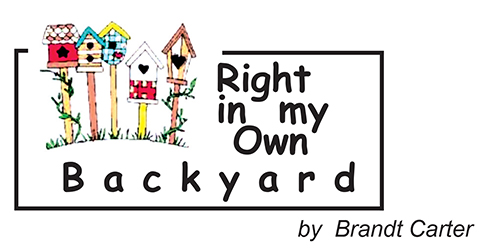
|
Broad Ripple Random Ripplings

The news from Broad Ripple
Brought to you by The Broad Ripple Gazette
(Delivering the news since 2004, every two weeks)

|
| Brought to you by: |

|

|

|

|

|

|
Converted from paper version of the Broad Ripple Gazette (v15n06)
Right in my Own Backyard - A Good Time for Science - by Brandt Carter
posted: Mar. 16, 2018

A Good Time for Science
In March we celebrate St. Patrick's Day, the Ides of March, Daylight Savings Time change (March 11 at 2am), and sometimes Easter. There is one more day to celebrate that calls for a science lesson to learn something you may never have pondered. It is the Spring Equinox.
What is an equinox? This is a date that represents the day when the sun crosses the celestial equator. It is the day when the day and night are of equal length. I totally look forward to the Vernal Equinox (or our spring event) because of the anticipated change of seasons and my plants and trees will awaken soon. The equinoxes are ancient. The early Romans marked them on their calendar. The Julian calendar (decreed by Julius Caesar in 45 BC) noted the spring and autumn celestial events. But in AD 325, the Gregorian calendar (our modern one) was established and the creators wanted the Vernal Equinox to reflect Easter. So spring equinox is not a fixed date; it can vary from March 19 through the 21st. This spring date differs in order to accommodate leap year. This year, we can celebrate the Vernal Equinox on March 20.
Remember the above description of the Vernal and Autumnal Equinoxes applies to us in the Northern Hemisphere only. Residents in the southern hemisphere have the reversed seasonal effects in areas south of the equator. But again, it is the time when the sun spends equal amounts of time above and below the horizon at every location on Earth. The time of daylight also differs depending on how far you are away from the equator. At the north and south poles, the equinoxes mark the change from 24 hours of darkness to 24 hours of daylight.
I dug a little deeper into the science of darkness and daylight; I wondered how the equinoxes were different from the solstices. The quickest resource was Wikipedia: "An equinox represents a day with equal duration of day and night (Mar 21 and September 23), and thus we have a spring and a fall equinox. And solstice refers to a day with either the longest day (June 21, also called summer solstice) or shortest day (Dec 21, also referred to as winter solstice)." People will celebrate the solstices by gathering at traditional sites like Newgrange in Ireland, Stonehenge in England, or Times Square in New York City. They will also be making special foods, celebrating the sun and entwining religion, culture, and legends−all being a joy-filled time.
Look at this information as a real inspiration. You have 4 more days you can call holidays. You can wish your friends Happy Vernal Equinox, Season's Greetings on this Autumnal Equinox, Enjoy your Summer Solstice, So Sorry I missed seeing you at Winter Solstice. I am sure many of you could make up some fun and memorable cards for these events and give each receiver a bit a science too. In addition to Beware of the Ides of March and Erin Go Bragh, I wish you a warm and beautiful Vernal Equinox. May you enjoy the sunshine, the nesting birds, and budding flowers and trees.
Brandt Carter, artist, herbalist, and naturalist, owns Backyard Birds at 2374 E. 54th Street. Visit her web site www.feedbackyardbirds.com. Email your bird questions to Brandt@BroadRippleGazette.com
brandt@broadripplegazette.com

|

|

|
| Brought to you by: |

|

|

|
| Brought to you by: |

|

|

|


